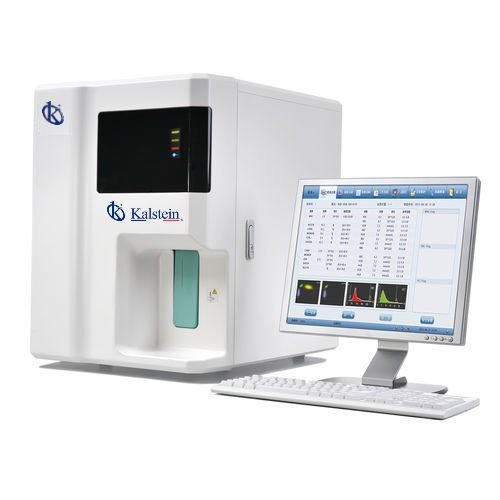Hematology analyzers are equipment used to perform complete blood counts, or hemograms.
What is a blood count?
A hemogram or hematological analysis reflects all the elements or components of the blood, reflecting their number or their proportion in the individual. In this analysis, the white or leukocyte series, the red or erythrocyte series, and platelets are measured.
The complete blood count is the most requested diagnostic test. It offers a multiparametric evaluation of blood components, including red blood cells, white blood cells, and platelets. The results inform about the well-being of the patient and allow diagnosing diseases such as anemia, infections and leukemia. Traditionally, complete blood counts are performed in clinical laboratories with automated hematology analyzers.
This test provides data on hematocrit (Ht), hemoglobin concentration (Hb), mean corpuscular hemoglobin concentration (MCHC), mean corpuscular volume (MCV), erythrocyte, leukocyte, and platelet count.
In addition, it provides us with information on the dispersion of erythrocyte size (RDW) (red blood cell distribution), which is expressed in% and represents the coefficient of variation of erythrocyte sizes. In the hemogram, the blood smear is also analyzed, which consists of the morphological evaluation of the blood elements, which can be especially useful in patients with anemia, but abnormalities in leukocytes or platelets can also be of diagnostic orientation.
What measurement technologies do hematology analyzers use?
It is important to know the counting technology used by the device, since the results may vary depending on one or the other:
- Flow cytometry: it is the most sophisticated and expensive method that exists today. The cells pass through a narrow tube onto which a laser beam is projected. The light falls on the cells and a detection device captures its reflection. In this case, we speak of laser flow cytometry.
- Electrical impedance: This technique is used to determine the number and volume of erythrocytes and thrombocytes. EDTA blood is diluted with an isotonic solution within the device and aspirated through a capillary hole.
- Laser diffraction: measures the particle size distribution. The angular variation of the intensity of diffuse light is measured when a laser beam passes through a sample of scattered particles.
What are the keys to a correct interpretation of the results reported by the 5-part hematology analyzers?
First, you must understand the technology of the analyzer, that is, how it obtains the information it provides: how is it generated? Where does it come from? In addition, you must know where the alarms are observed, why they are generated and what each one of them means, have knowledge about the software and proper handling of each of the screens.
It is not always necessary to check the smear. It is advisable to develop decision trees and maps that can be used to decide whether or not to automatically release differential results, platelet counts, and other parameters, or to proceed with manual review.
At Kalstein we are MANUFACTURERS and we offer you excellent hematology analyzers at the best PRICES. That is why we invite you to take a look HERE

